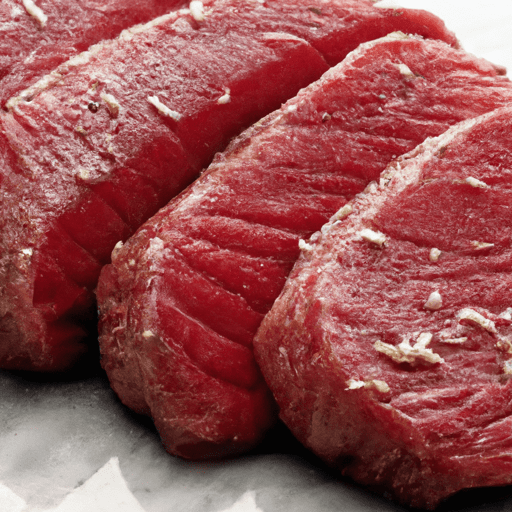The Ultimate Guide to Beef Tenderloins
If you’re a meat enthusiast, it’s nearly impossible to resist the allure of a perfectly cooked beef tenderloin. Juicy, tender, and packed with flavor, this cut of beef holds a special place in the hearts (and taste buds) of many food lovers. In this guide, we will explore everything you need to know about beef tenderloins, from its taste and common uses to its nutritional value and interesting facts.
Taste and Texture
Beef tenderloin, also known as filet mignon, is renowned for its exceptional tenderness and buttery texture. It is a lean cut of meat taken from the middle section of the beef loin. The tenderloin, located beneath the ribs and along the backbone, experiences minimal movement, resulting in its tender and melt-in-your-mouth goodness. When properly cooked, it offers a delicate and mild flavor that pairs well with a variety of seasonings and sauces.
Common Uses in Cooking
The versatility of beef tenderloin enables it to be used in various culinary creations. It can be enjoyed as a standalone steak, either grilled, broiled, or pan-seared to perfection. Its tenderness also makes it a prime choice for dishes that require a more delicate touch, such as carpaccio or beef tartare.
Beef tenderloin can also be transformed into elegant roasts, making it a centerpiece for special occasions. The most famous preparation is the classic Beef Wellington, where the tenderloin is wrapped in puff pastry with mushroom duxelles. This iconic dish showcases the tenderness of the meat while enveloping it in a delightful combination of flavors.
Nutritional Value
While beef tenderloin is undoubtedly a treat for the taste buds, it also offers a decent nutritional profile. It is a rich source of high-quality protein, essential for muscle growth and repair. Additionally, it contains important vitamins and minerals, including iron, zinc, and B vitamins, which contribute to overall health and well-being.
It’s worth noting that beef tenderloin is a relatively lean cut of beef, making it a healthier choice compared to fattier cuts. However, moderation is key, as it still contains saturated fat. Opting for grass-fed or organic beef can also enhance the nutritional value, providing a higher content of omega-3 fatty acids and other beneficial nutrients.
History and Interesting Facts
Beef tenderloin has a rich culinary history that spans centuries. It has long been considered a prized cut of meat, favored by royalty and gourmands alike. In traditional French cuisine, beef tenderloin plays a prominent role, featuring in iconic dishes like Chateaubriand and Tournedos Rossini.
Moreover, beef tenderloin has an interesting connection to the rise of American steak culture. During the late 19th century, as railroads expanded and introduced fresh beef to the Eastern United States, filet mignon gained popularity among the elite. It soon became synonymous with luxury and indulgence, solidifying its place as a staple in steakhouse menus worldwide.
Tips for Cooking Beef Tenderloin
Cooking beef tenderloin to perfection requires attention to detail. Here are a few tips to help you achieve remarkable results:
Seasoning: Enhance the flavor by generously seasoning the meat with salt, pepper, and herbs like rosemary or thyme.
Searing: For a flavorful crust, sear the beef tenderloin in a hot skillet before transferring it to the oven or grill.
Temperature: Use a meat thermometer to ensure accurate cooking. Aim for an internal temperature of around 130-135°F (medium-rare) or adjust according to your preference.
Resting: Allow the beef tenderloin to rest for a few minutes after cooking to ensure optimal juiciness and tenderness.
Beef tenderloin, with its unmatched tenderness and delicate flavor, is truly a culinary gem. Whether enjoyed as a juicy steak or transformed into elegant roasts, it never fails to impress. Remember to savor every bite and appreciate the journey this remarkable cut of beef has taken throughout history. So go ahead, indulge in the luxurious experience of beef tenderloin and elevate your dining moments to new heights!
Disclaimer: The nutritional information provided is based on a general understanding and may vary depending on specific cuts and cooking methods.
Origin of Beef Tenderloin:
- Beef tenderloin is a cut of meat that comes from the loin area of a cow.
- It is a muscle that is not heavily worked, resulting in its tender texture.
Common Uses of Beef Tenderloin:
- Beef tenderloin is often used to make premium cuts of steak, such as filet mignon.
- It can also be roasted whole and sliced for serving, commonly known as a beef tenderloin roast or chateaubriand.
- Some other popular preparations include beef Wellington and steak tartare.
Nutritional Benefits of Beef Tenderloin:
- Beef tenderloin is a rich source of protein, essential amino acids, and various vitamins and minerals.
- It contains significant amounts of iron, vitamin B12, zinc, and phosphorus.
- However, it is also relatively high in fat, especially when compared to leaner cuts of meat like sirloin or round steak.
Unique Properties and Historical Significance:
- Beef tenderloin is considered one of the most tender cuts of meat due to the minimal connective tissue it contains.
- It is often regarded as a premium cut and is associated with luxury dining experiences.
- Historically, beef tenderloin was considered a delicacy and was enjoyed by aristocrats and the wealthy.
- The term “filet mignon” is derived from the French words “filet,” meaning “thick slice,” and “mignon,” meaning “tender.” It is a testament to its tenderness and desirability.
Please note that if you have any specific questions about preparation, cooking techniques, or recipes involving beef tenderloin, I can provide further details.




Use the share button below if you liked it.
It makes me smile, when I see it.